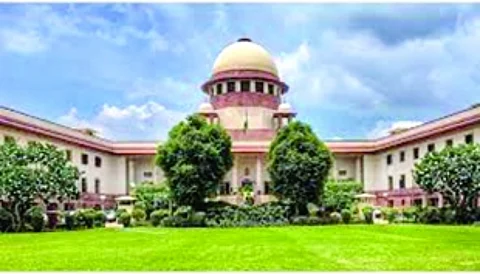

Indian Judiciary faces certain integral issues and chief among them is the slow delivery of justice. Over the years the Law Commission of India has recommended several reforms and there have been reports by Justice G C Rankin in 1925, Justice SR Das in 1949 and Justice VS Malimath in 2003. Civil Society organisations have also released reports on the justice delivery system but despite so many efforts, the problem of the justice delivery system in India has remained. Voicing some of these concerns Chief Justice of India NV Ramana has called the Indianisation of the country's legal system the need of the hour, he also said it is crucial to make the justice delivery system more accessible and effective. According to the CJI, courts need to be litigant centric while simplification of the justice delivery should be the pressing concern and he says “very often our justice delivery poses many barriers for the common people, the working and the style of the court do not sit well with the complexities of India, our system practice rules being colonial in origin it may not be the best suited to the needs of the Indian population”.
The CJI also clarified that “by Indianisation, he means the localisation of the justice league delivery system” and for example, he said “parties from a rural place fighting a family dispute are usually made to feel out of place in court and they do not understand arguments or pleadings which are mostly in the English language, a language alien to them” and “these days judgments have become very lengthy which further complicates the position of litigants and for the parties to understand the implication of judgment, they are forced to spend more money”.
The statement made by the CJI is timely when the government itself is introducing so many judicial reforms it is an ongoing process. Indianisation and judicial reform when we talk, we have to take into consideration what our reforms have taken place so far. The number of judges has been increased but not to the desired expectations. We are using technology for the last 20 years, the steps have been taken to use technology into the justice delivery system and during the last five years the pace has accelerated, certain amendments have been made in the procedural laws including the Evidence Act, the CPC and the CrPC whereby the timelines have been prescribed for trial of certain offences or disposal of certain cases. Similarly, the Constitution of various tribunals to deal with the specialised issue to decide the cases based on the principles of natural justice has also been done, but despite that, we find that the pendency in the courts is increasing. As of today, it is said that more than 4.5 crore cases are pending in the judiciary, about 65,000 cases are pending in the Supreme Court alone and about 60 lakh cases are pending with the various high courts. One of the judges has commented recently that “even if no new cases are filed, to clear the existing vacancies and backlog itself it will take judiciary almost a hundred years”. If that is the situation then what the Chief Justice of India says becomes very important. It's not that the steps have not been taken, the Judge's strength has been increased despite that increase the number is not up to the desired level. All these reforms which have taken place probably need to be accelerated.
Our entire colonial system was based from the point of your master-servant relationship and not from the people's point of view so they created a system which suited them and therefore there is a need to change this system as rightly pointed out by many experts that we have to empower our Panchayati raj institutions, all those small and simple cases should not clog our normal court system, it should be given to them, we might have a very good and excellent system. The use of Indian languages in Court at the grass-root level, at the district level, is very important because people don't even understand what is going on inside the court, what is written in the pleadings and the petitions. So Indianisation has to start at the grassroots level even in the Supreme Court, judgments have been now translated into Hindi and other languages also. All this is for taking justice to the people, we have to remove the complexities and make it as simple as possible.
For example, the use of technology in the day-to-day functioning of the Courts has brought a sea change during the last 10 years in the judicial system. People now know when their case is likely to come, moment the Supreme Court delivers a judgment within 5 minutes we get the judgment on your Internet unless you want a certified copy from the court. Immediately you can download it from your computer, this kind of improvements have come they're all part of the Indianisation.
Under the Chairmanship of Justice Chandrachud, a committee was established and the system was developed whereby the criminal appeals in Bombay, and Delhi high court will be solved through artificial intelligence. The artificial intelligence will research the work which is to be done, scrutinise the important facts of the case and what is the applicable case law. This analysis will be displayed before the judge by way of artificial intelligence and after that, the judge will be in a position to draw a decision quickly. Such steps if taken in the right direction would be a sea change reform in the Indian judicial system.
(The author is an advocate by profession)